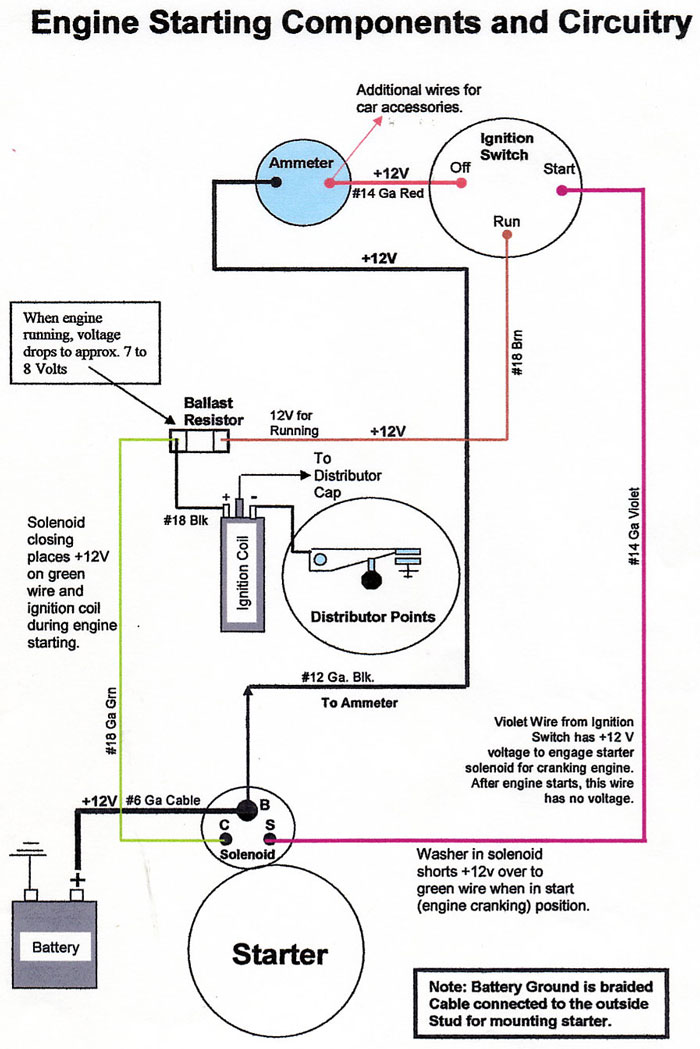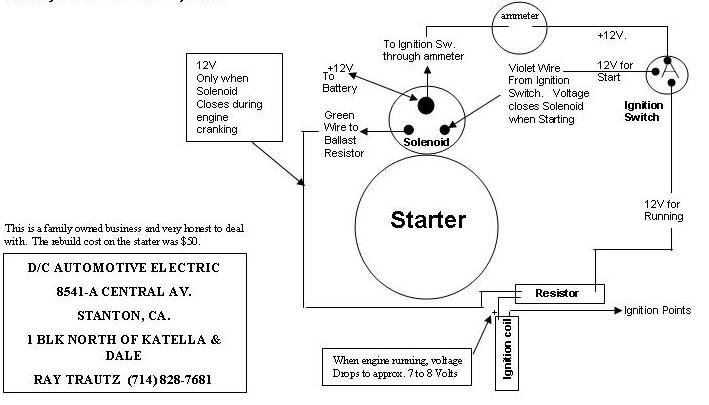| The following Tech Tip was submitted by member Jim Lundal:
This Tech Tip describes the Starting circuitry of a C1 Corvette. The circuitry is fairly common to all Solid axle cars. |
|
TECH TIPS, or, it sure seems simple now! (contributed by Jim Lundal)
Over the past year, or so, my Fuel Injected 1960 Corvette, has experienced a problem in starting after running on either long trips or short trips. This problem got to the stage of constantly wondering if it would start at all, before running the battery down. My initial thoughts, centered around the fuel injection, (probably because it is the area I know least about) but I always remember the words from the guy who built it (over 15 years ago), “Always check everything else before blaming the FI”. Then I got the notion that the starter might be drawing too much power (current) and not providing enough voltage for adequate spark. Also, after owning the car for 15 years and not experiencing any problems with the FI, I was inclined to believe that the problem might be elsewhere. Soo’, off I went to remove the starter and take it to a re-builder. Incidentally, I would recommend this guy to anyone. More on that later! While removing the starter, and associated wires, I noticed that the wire on the left side (as viewed from the solenoid front) of the solenoid was missing, and only the wire lug remained. This is not right! The wiring schematic indicated this green colored wire connected the solenoid to one side of the ballast resistor and ignition coil. I then continued and removed the other wires, and ultimately the starter. While the starter was in for rebuild, I began looking for the missing green wire. Sure enough, there was a green (correct color) wire still attached to one side of the ballast resistor and coil, in its correct location. Further harness investigation containing the green wire revealed that the harness was wrapped with two layers of black vinyl tape and that was suspicious. Removing the outer tape layer, exposed the bare strands of the missing green wire, having burned off the insulation some-number of years ago (pre-Lundal era). The Solenoid end of the bare strands were missing. The purpose for this green wire is to provide the full 12 volts to the coil while cranking the engine and thereby providing a hotter spark while starting the engine. BINGO! Maybe now I have a second problem!
After ordering a new ignition harness and receiving my rebuilt starter, all was ready to go back together. It turned out that the starter was found to be missing a front bushing and the armature shaft had grooves in it. All new parts were used. Once everything was back together (the hardest part of the job was replacing the ignition harness), I got into the car to see what else might smoke. I hit the starter and I immediately stopped, as I have NEVER had that engine turn over so fast, AND, starting now occurs in one revolution, all the time. Proper spark, and good starter! LESSON LEARNED: Don’t overlook the obvious! I have been running without the green wire for over 15 years but only when the starter got “really” bad, did the starting problems surface to a level where something needed to be done. This problem has a common thread to most early Chev auto’s and the wiring is very similar. Unless, you go through and make sure of the wiring, you never know what has happened before you got your treasure. Also, check everything before you blame the fuel injection!
|
 |

